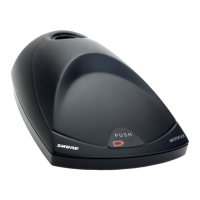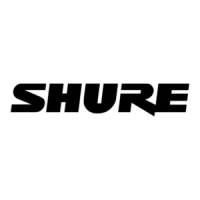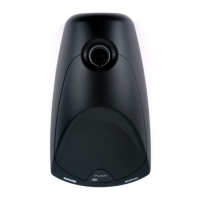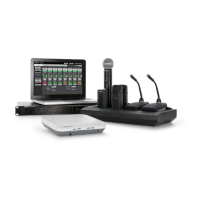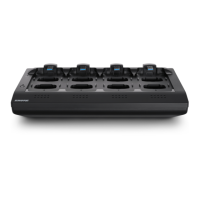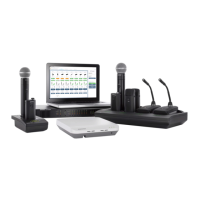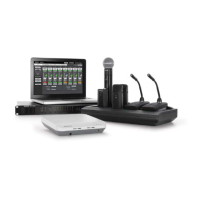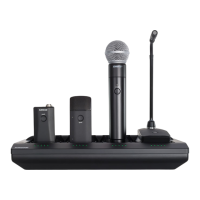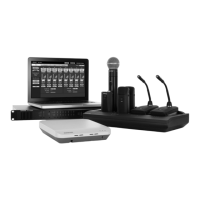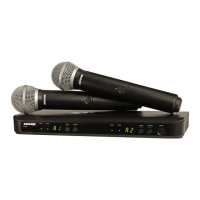Overzicht
General Description
The Shure Microflex
®
Wireless Series (MXW) is a complete microphone solution for flexible meeting rooms and boardrooms. It features automatic RF channel
management, rechargeable wireless microphones with encryption (AES256), and digital audio networking using Dante™ .
The MXW Access Point (APT) mounts to a ceiling or wall for discreet communication between the wireless microphones and the digital audio network. Multiple
access points can be used for installations that require simultaneous operation of up to 80 microphones in the same area, depending on the region. The MXW
networked charging station charges and stores boundary and gooseneck microphones for tabletop applications, as well as handheld and bodypack solutions
for corporate training and presentations. A web-browser control software is used for system setup and remote monitoring and control from any computer con-
nected to the network.
Features
Legendary Shure Quality
Premium Audio
All Microflex microphones are engineered to clearly capture the natural characteristics of voice communications, and include CommShield® Technology which
guards against unwanted radio interference from consumer wireless devices such as cell phones and tablets.
Rechargeable Microphones
Each MXW microphone is powered from a rechargeable Lithium-ion battery, which can be charged at any time without removal from the microphone. Lithium-
Ion chemistry and intelligent Shure circuitry results in a rechargeable battery with no memory effect. Battery statistics are viewable from the control software
(battery runtime, time to full charge, charge cycle count and battery capacity).
Discreet, Professional Design
1/72©2016 Shure Incorporated
MXW



